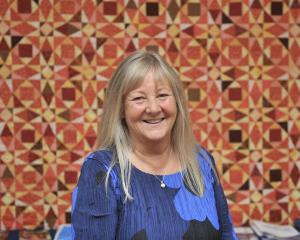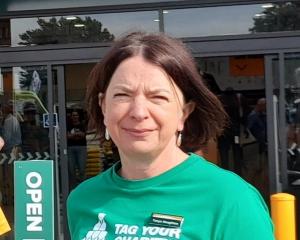
The programme, based on science solutions and what farmers have learnt, to reduce N loss after trialling options on about 40 farms was carried out over five years until 2023.
A panel of four farmers shared some of the main changes and the impact on their N loss, production and profit during a workshop during the South Island Dairy Event (SIDE) at Lincoln University.
On the panel were founder Athol New, of Tullba Ltd, a 600ha dairy and beef business in Mayfield, Camden Group general manager Terry Kilday, Dairy Holdings farm operations manager Mick O’Connor and Southern Pastures general manager James Booker.
Workshop controller Virginia Serra asked them what they would do to make continuous improvements to further reduce nitrogen loss on their farms.
Mr Booker said any farm system changes needed to benefit farm emissions and the property’s footprint.
"I just lean back on genetics and better cows and high feed conversion efficiency and maybe that means we can drop a few cows from the total crop.
"That’s probably our key objective for the future. There’s definitely potential for dropping autumnal intensity and finding the management models that reward the farmer teams, the sharemilkers and the managers in that type of model."
Mr New said they were still trying to work that out.
"I’m not sure where to next for the current type of business to where our N loss number goes to. Going from 41 [kg of nitrogen loss per hectare per year] to 25 — that’s probably doable, but going 25 to 15, that’s going to be harder to look at.
"Does that give you a return on capital investment or is it more efficient for us to go and buy a dairy farm that’s 260 [kg of nitrogen fertiliser a hectare] and make it 230? That’s where we will probably look."

"There will be some slight reductions, but they will be very small."
Tools such as plantain were still available to them.
The grazing herb plantain has been shown to dilute nitrogen in cow urine.
Mr Kilday said his operation was not using plantain at this stage, but might in the future as technology advanced.
They still had irrigation upgrades which could be made to replace older systems.
"Probably the next step is capital spend and actually change out some of the irrigation systems to help N loss.
"We know from work on other farms we will actually get a return on investment."
During the project, nitrogen loss across all of the partner farms dropped from 78kg/ha per year to 44kg, with nitrogen fertiliser reduced from 246kg/ha to 169kg.
On his Mayfield farm, Mr New lowered his nitrogen fertiliser from 267kg on his effluent area to 168kg, N loss dropping to 25kg in 2022-23.
Milksolid production was maintained.

Mr Booker’s Pareka farm, which also uses plantain, had an N loss of 36kg/ha in 2022-23. The stocking rate was reduced from 1050 to 930 cows.
He said plantain was quickly out-competed by other pasture and reaching a 10% yield was still a challenge.
At Dairy Holding’s Terrace farm, Mr O’Connor observed N loss dropping 56% from 2017 to 39kg/ha in 2022-23 while at Camden Group’s Willesden farm, Mr Kilday found N loss dropped 43% to 28kg/ha.
Some of the reduced losses were achieved by changes to irrigation management or making irrigation more efficient, improving effluent management, reducing nitrogen fertiliser, growing plantain or other crops and changing the intensity of farm systems.
The four farms all reduced their nitrogen fertiliser use, but other changes varied.
Nationwide regulations introduced a few years ago limited synthetic nitrogen fertiliser applications to 190kg per hectare per year on grazed land.
The farmer panel was asked if this limit didn’t exist, would they use more.
Responses ranged from possibly using it more strategically across a farm, getting as close to the 190kg cap as possible and only going under 190kg.
Mr O’Connor said farmers needed to bear in mind that more fertiliser restrictions were likely in future.















